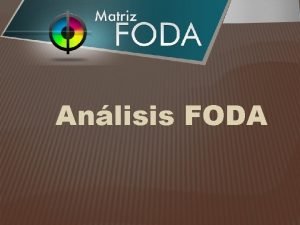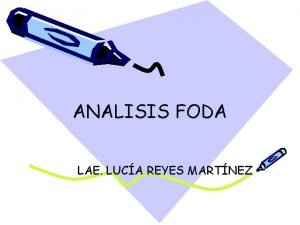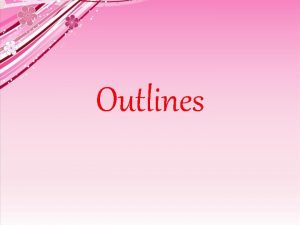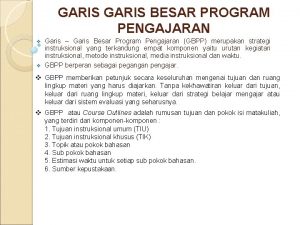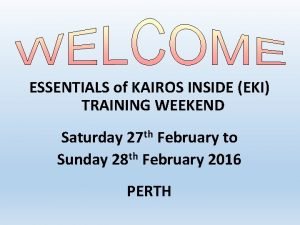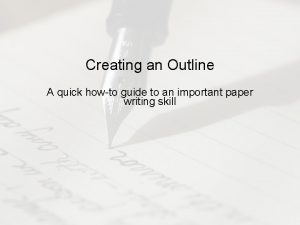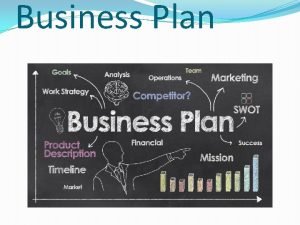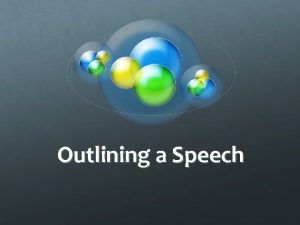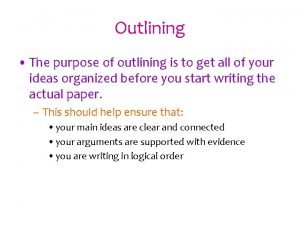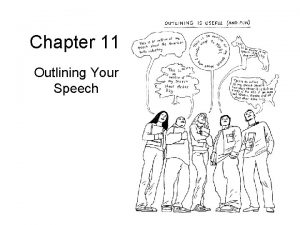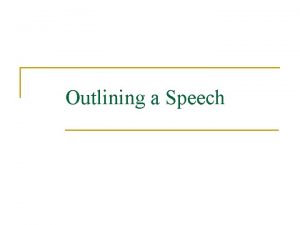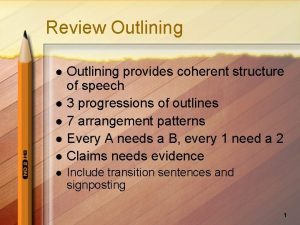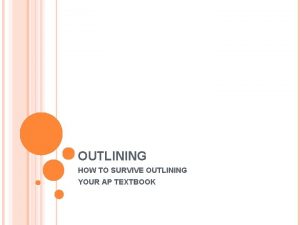outlining a mini lesson for research why outlines









- Slides: 9

outlining a mini lesson for research

why outlines? • • helps create an outline to show the hierarchical relationship or logical ordering of information helps keep track of large amounts of information • aids in the process of writing • helps you organize your ideas • presents your material in a logical form • shows the relationships among ideas in your writing • constructs an ordered overview of your writing

how do I start? • determine the purpose of the paper • determine the audience of the paper • develop thesis of the paper

then what? • • Brainstorm: List all the ideas that you want to include in your paper. Organize: Group related ideas together. Order: Arrange material in subsections from general to specific or from abstract to concrete. Label: Create main and sub headings.

things to remember. . . • • think about what order your subtopics will go in & why consider how each idea relates to one another, builds upon one another to strengthen what you’re trying to prove to think about what evidence BEST supports your ideas to think about how to acknowledge the other side of the argument

MLA strikes again. . . Thesis: Single underline the “other side”/ double underline your “change or stand. ” I. Subtopic 1 A. First support point topic sentence i. Evidence one with explanation a. Paraphrase or Quote (MLA format citation) b. Paraphrase or Quote (MLA format citation) i. How does this relate to the next point? ? ? Compare? Contrast? Add an example? B. Second support point topic sentence i. Evidence one with explanation a. Paraphrase or Quote (MLA citation format) b. Paraphrase or Quote (MLA citation format) ii. How does this relate to the next point? ? ? Compare? Contrast? Add an example? C. What conclusions can you draw from this first paragraph to build your thesis? How does this subtopic advance your thesis? II. thesis? Subtopic 2—consider how it relates to subtopic 1 to create an effective conclusion A. First support point topic sentence i. Evidence one with explanation a. Paraphrase or Quote (MLA format citation) b. Paraphrase or Quote (MLA format citation) i. How does this relate to the next point? ? ? Compare? Contrast? Add an example? B. Second support point topic sentence i. Evidence one with explanation a. Paraphrase or Quote (MLA citation format) b. Paraphrase or Quote (MLA citation format) C. What conclusions can you draw from this first paragraph to build your thesis? How does this subtopic advance your

Ima Goodwriter's example. . Thesis: Although the current trend of education promotes standards-based learning, teachers must not forget the importance of imagination in the classroom. Body: I. Standards-Based education—the counter argument a. i. 1. Standards-based education is a well-intentioned movement that has taken over education in the 21 st century. Nice in theory “There are two themes that are central here: first that "all" students can achieve these goals, and second that students must be given enough time to master these goals” (Kohl 1). 2. “as units of measure that make it possible to quantify the performance of students, teachers, and schools” (Eisner 1). 3. “Standards imply high expectations, rigor, things of substance. To be without standards is not to know what to expect or how to determine if expectations have been realized - or so it seems. Yet once we get past the illusions that the concept invites - once we think hard about the meaning of the term - the picture becomes more complex” (Eisner 1). 1. ii. DIFFERENT THAN REALITY b. In reality, however, standards-based education creates a variety of problems. “Yet Such high-stakes testing may 1) lead to an even more arid curriculum, 2) drive away talented teachers, 3) tempt states to lower the bar in order not to lose federal money, 4) increase pressure to cheat, and 5) alienate educated parents. That's not "reform with results, " at least not the results those who support public education would wish for” (Merrow 1). 2. “distracts us from the deeper, seemingly intractable problems that beset our schools. It distracts us from paying attention to the importance of building a culture of schooling that is genuinely intellectual in character, that values questions and ideas at least as much as getting right answers” (Eisner 1). ii. While the argument for standards seems like the answer, with them come significant drawbacks.

work cited. . . Works Cited Bresler, Liora. "Toward Connectedness: Aesthetically Based Research. " Studies in Art Education 48. 1 (2006): 52+. Questia. Web. 11 Apr. 2013. Iannone, Ron. "Imagination: The Missing Link in Curriculum and Teaching. " Education 122. 2 (2001): 307+. Questia. Web. 11 Apr 2013. Kerr, Lynda C. "Many Horses: a Personal Experience with National Board Certification and Creative Thinking. " Art Education Jan. 2005: 17+. Questia. Web. 11 Apr. 2013. Kohl, Herbert. "A Love Supreme-riffing on the Standards: Placing Ideas at the Center of High Stakes Schooling. " Multicultural Education Winter 2006: 4+. Questia. Web. 11 Apr. 2013. Merrow, John. "Undermining Standards. " Phi Delta Kappan 82. 9 (2001): 652. Questia. Web. 11 Apr. 2013.

types of outlines. . . • alphanumeric o I. § A. • 1. • • o a. o b. full sentence outline o Includes more than phrases and ideas informal o Use your own model to organize your ideas

